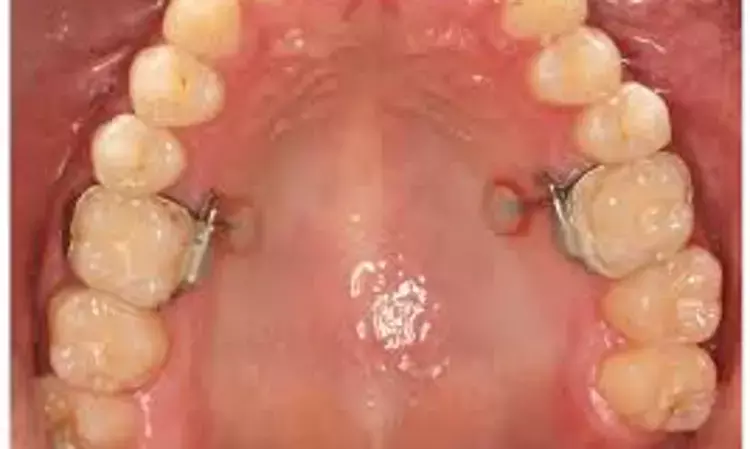- Home
- Medical news & Guidelines
- Anesthesiology
- Cardiology and CTVS
- Critical Care
- Dentistry
- Dermatology
- Diabetes and Endocrinology
- ENT
- Gastroenterology
- Medicine
- Nephrology
- Neurology
- Obstretics-Gynaecology
- Oncology
- Ophthalmology
- Orthopaedics
- Pediatrics-Neonatology
- Psychiatry
- Pulmonology
- Radiology
- Surgery
- Urology
- Laboratory Medicine
- Diet
- Nursing
- Paramedical
- Physiotherapy
- Health news
- Fact Check
- Bone Health Fact Check
- Brain Health Fact Check
- Cancer Related Fact Check
- Child Care Fact Check
- Dental and oral health fact check
- Diabetes and metabolic health fact check
- Diet and Nutrition Fact Check
- Eye and ENT Care Fact Check
- Fitness fact check
- Gut health fact check
- Heart health fact check
- Kidney health fact check
- Medical education fact check
- Men's health fact check
- Respiratory fact check
- Skin and hair care fact check
- Vaccine and Immunization fact check
- Women's health fact check
- AYUSH
- State News
- Andaman and Nicobar Islands
- Andhra Pradesh
- Arunachal Pradesh
- Assam
- Bihar
- Chandigarh
- Chattisgarh
- Dadra and Nagar Haveli
- Daman and Diu
- Delhi
- Goa
- Gujarat
- Haryana
- Himachal Pradesh
- Jammu & Kashmir
- Jharkhand
- Karnataka
- Kerala
- Ladakh
- Lakshadweep
- Madhya Pradesh
- Maharashtra
- Manipur
- Meghalaya
- Mizoram
- Nagaland
- Odisha
- Puducherry
- Punjab
- Rajasthan
- Sikkim
- Tamil Nadu
- Telangana
- Tripura
- Uttar Pradesh
- Uttrakhand
- West Bengal
- Medical Education
- Industry
Smooth tooth surfaces & restorative material blocks show similar in situ plaque composition: Study

Smooth tooth surfaces & restorative material blocks show similar in situ plaque composition, according to a recent study published in the Journal of Dentistry.
The aim of this study was to investigate 12 h in situ bacterial colonization on different restorative materials with smooth surfaces.
The restorative materials examined included resin composite (RC), a glass ionomer cement (GIC), casein phosphopeptide-amorphous calcium phosphate modified GIC (CPP-ACP GIC, 3% w/w), and control bovine teeth. Polished bovine tooth and material slabs (average roughness < 0.2 μm) were prepared. Specimens were mounted in a custom-made removable appliance, then placed for 12 h in the oral cavities of ten systemically and orally healthy volunteers (23-30-year-old). The colonized bacteria on the restorative materials were evaluated by real-time quantitative polymerase chain reaction (q-PCR) and 16S rRNA gene sequencing.
Results:
The in situ bacterial colonization, in terms of both total bacterial biomass and bacterial community composition, was similar among the restorative materials tested. The microbiota of early plaque comprised similar "core microbiota", which were dominated by species within the genera of Streptococcus, Haemophilus, Neisseria, Gemella, and Prevotella, regardless of the type of underlying surface. Beta-diversity analyses revealed that most differences in the microbiota profile among samples were attributed to inter-individual variation, rather than the different materials. The microbial community composition of 12 h in situ plaque appeared different from that of the whole saliva.
Thus, the similar bacterial composition of 12-h in situ plaque was observed on smooth material and tooth surfaces tested, including species mainly from within the Streptococcus, Haemophilus, Neisseria, Gemella, or Prevotella genera. The high inter-individual variation in plaque microbiota observed in this study, which outweighed the potential differences among various materials, demonstrated the importance of an in situ biofilm model as well as consideration of the host oral an microbial backgrounds when evaluating the bacterial colonization on restorative materials.
Reference:
Evaluation of 12-hour in situ bacterial colonization on smooth restorative material surfaces by Hongying Hu et al. published in the Journal of Dentistry.
https://www.sciencedirect.com/science/article/abs/pii/S0300571222001282
Dr. Shravani Dali has completed her BDS from Pravara institute of medical sciences, loni. Following which she extensively worked in the healthcare sector for 2+ years. She has been actively involved in writing blogs in field of health and wellness. Currently she is pursuing her Masters of public health-health administration from Tata institute of social sciences. She can be contacted at editorial@medicaldialogues.in.
Dr Kamal Kant Kohli-MBBS, DTCD- a chest specialist with more than 30 years of practice and a flair for writing clinical articles, Dr Kamal Kant Kohli joined Medical Dialogues as a Chief Editor of Medical News. Besides writing articles, as an editor, he proofreads and verifies all the medical content published on Medical Dialogues including those coming from journals, studies,medical conferences,guidelines etc. Email: drkohli@medicaldialogues.in. Contact no. 011-43720751


